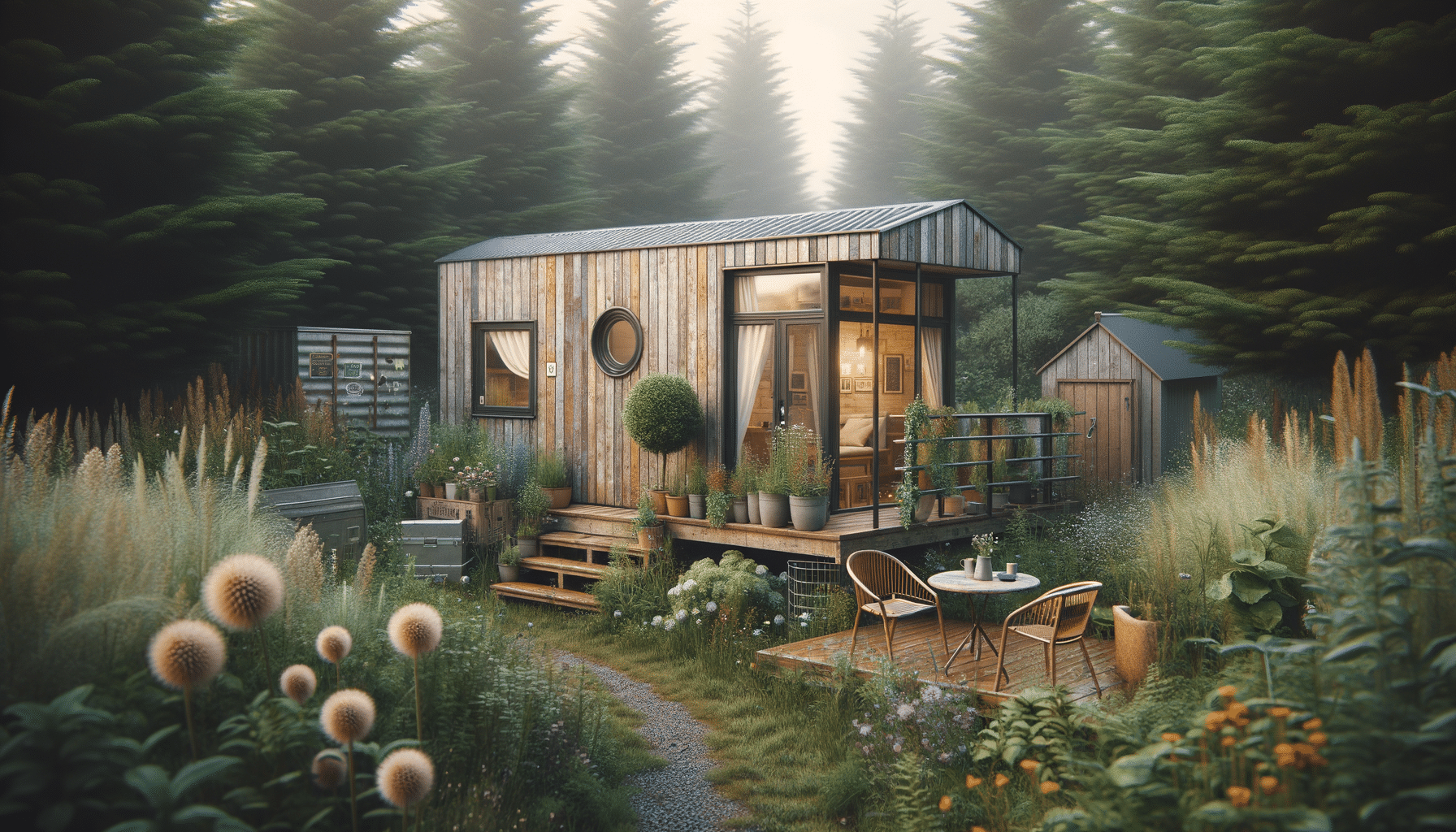
Explore the World of Tiny Trailer Homes
The Rise of Tiny Trailer Homes
Tiny trailer homes have become a significant trend in the housing market, capturing the imagination of those seeking a minimalist and sustainable lifestyle. These compact homes, often under 400 square feet, offer a unique blend of mobility and efficiency, providing an appealing solution for those looking to downsize or live more sustainably. The rise of tiny trailer homes can be attributed to several factors, including the increasing cost of traditional housing, the desire for a simpler life, and the growing awareness of environmental impacts.
One of the most attractive features of tiny trailer homes is their affordability. Compared to conventional homes, tiny trailers require a significantly lower investment, making homeownership more accessible to a broader audience. Additionally, the reduced size means lower utility costs, which further enhances their appeal. For many, this financial freedom allows for greater flexibility in lifestyle choices, such as traveling or pursuing passions without the burden of a hefty mortgage.
Moreover, tiny trailer homes align with the growing trend of sustainable living. These homes are often built with eco-friendly materials and designed to maximize energy efficiency. Solar panels, composting toilets, and rainwater collection systems are commonly integrated, reducing the environmental footprint of the residents. This commitment to sustainability not only benefits the planet but also resonates with individuals striving to live more consciously.
In conclusion, the rise of tiny trailer homes is a reflection of changing priorities in modern society. As people continue to seek affordable, flexible, and environmentally friendly living solutions, tiny trailers offer a compelling alternative to traditional housing. Their growing popularity highlights a shift towards valuing experiences over possessions and embracing a lifestyle that prioritizes simplicity and sustainability.
Design and Functionality of Tiny Trailer Homes
Designing a tiny trailer home requires creativity and a keen understanding of space utilization. Despite their small size, these homes can be incredibly functional and comfortable, offering all the essentials of traditional living in a compact form. The key to successful tiny trailer design lies in maximizing every square inch, ensuring that each element serves multiple purposes.
A typical tiny trailer home features a cleverly designed interior that often includes a kitchenette, sleeping area, bathroom, and living space. Multifunctional furniture is a staple, with items like fold-out beds, convertible tables, and built-in storage solutions. These innovations allow residents to enjoy a full range of amenities without sacrificing space or comfort.
Customization is another hallmark of tiny trailer homes. Owners have the freedom to tailor their homes to fit their specific needs and tastes. Whether it’s adding a skylight for natural light, incorporating a lofted sleeping area, or installing a wood-burning stove, the possibilities are endless. This level of personalization ensures that each tiny trailer home is as unique as its owner.
Furthermore, the exterior design of tiny trailer homes often reflects the personal style of the owner. From rustic cabins to sleek modern designs, the aesthetic choices are vast. Many choose to enhance their homes with outdoor living spaces, such as decks or patios, which extend the usable area and provide a connection to nature.
In summary, the design and functionality of tiny trailer homes demonstrate that small living spaces can be both practical and stylish. Through innovative design solutions and a focus on customization, these homes offer a comfortable and personalized living experience that challenges the conventional notions of what a home should be.
The Benefits of Living in a Tiny Trailer Home
Living in a tiny trailer home offers a range of benefits that appeal to a diverse audience. One of the primary advantages is the financial freedom it provides. With lower initial costs and reduced ongoing expenses, tiny trailer homes enable individuals to allocate their resources towards other pursuits, such as travel, education, or hobbies.
Another significant benefit is the ability to lead a more sustainable lifestyle. Tiny trailer homes typically consume fewer resources and produce less waste compared to larger homes. This eco-friendly approach not only helps preserve the environment but also aligns with the values of those committed to reducing their carbon footprint.
Mobility is another appealing aspect of tiny trailer homes. Unlike traditional homes, these dwellings can be moved to different locations, offering unparalleled flexibility. Whether it’s relocating to a new city for work, exploring different landscapes, or simply following the seasons, tiny trailer homeowners can easily adapt to changing circumstances without the hassle of buying or selling property.
Additionally, the minimalist lifestyle associated with tiny trailer living can lead to improved well-being. By prioritizing experiences over material possessions, residents often find themselves less stressed and more focused on what truly matters. The simplicity of tiny living encourages a more mindful approach to life, fostering a sense of contentment and satisfaction.
In conclusion, the benefits of living in a tiny trailer home are manifold. From financial savings and environmental sustainability to mobility and enhanced well-being, these homes offer a compelling lifestyle choice for those seeking freedom and simplicity. As more people embrace this way of living, the tiny trailer home movement continues to grow, inspiring others to consider the advantages of downsizing.
Challenges and Considerations of Tiny Trailer Living
While tiny trailer homes offer numerous advantages, they also come with their own set of challenges and considerations. One of the primary challenges is space limitation. Living in a small area requires careful organization and a willingness to let go of non-essential items. This can be a significant adjustment for individuals accustomed to larger living spaces.
Storage can also be a concern in tiny trailer homes. With limited room for belongings, residents must prioritize what they truly need and find creative storage solutions. This often involves utilizing vertical space, investing in multifunctional furniture, and regularly decluttering to maintain a tidy and functional environment.
Another consideration is the legal and logistical aspects of tiny trailer living. Zoning laws and building codes vary by location, and not all areas are accommodating to tiny homes. Prospective owners must research and navigate these regulations to ensure compliance and avoid potential issues.
Additionally, the mobile nature of tiny trailer homes can present challenges related to relocation. Finding suitable parking spots, accessing utilities, and ensuring the home is roadworthy are all important factors to consider. These logistical aspects require planning and flexibility, as well as a willingness to adapt to different environments.
Despite these challenges, many people find that the benefits of tiny trailer living outweigh the drawbacks. By approaching these considerations with an open mind and a proactive attitude, residents can enjoy the freedom and simplicity that tiny trailer homes offer. As the movement continues to grow, so too does the support network of like-minded individuals, providing resources and advice for navigating the unique aspects of tiny living.
The Future of Tiny Trailer Homes
The future of tiny trailer homes looks promising as more people embrace this innovative housing solution. As society continues to prioritize sustainability and affordability, tiny trailer homes are well-positioned to meet these demands, making them a viable option for a wide range of individuals.
Technological advancements are also playing a role in shaping the future of tiny trailer homes. Innovations in solar power, water conservation, and smart home technology are enhancing the functionality and efficiency of these homes, making them even more appealing to environmentally conscious consumers.
Furthermore, the growing interest in alternative housing options is encouraging communities to become more accepting of tiny homes. As awareness and understanding increase, municipalities are beginning to adapt their zoning laws and building codes to accommodate these unique dwellings. This shift towards inclusivity is paving the way for more widespread adoption of tiny trailer homes.
The cultural impact of tiny trailer homes cannot be overlooked. As more people share their experiences and insights through social media and online platforms, the movement continues to gain momentum. This exposure is inspiring others to consider the benefits of downsizing and simplifying their lives, contributing to a broader societal shift towards minimalism and sustainability.
In conclusion, the future of tiny trailer homes is bright. With ongoing advancements in technology, increasing acceptance in communities, and a growing cultural movement, tiny trailer homes are poised to become a mainstream housing option. As more people seek affordable, sustainable, and flexible living solutions, tiny trailer homes offer a compelling alternative that aligns with modern values and lifestyles.


